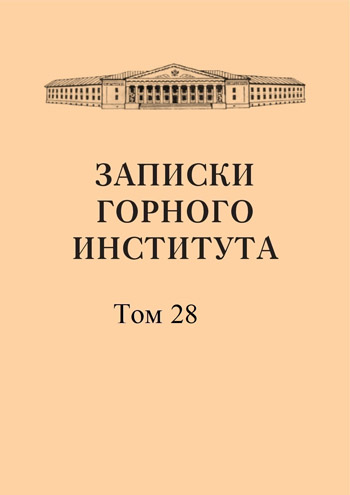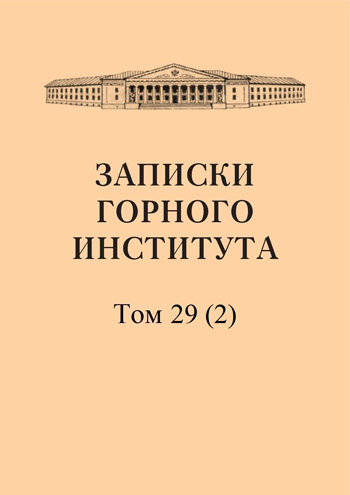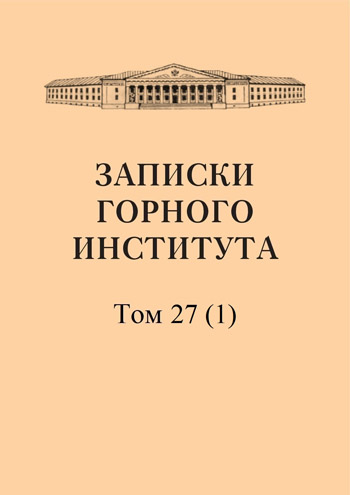-
Date submitted1952-07-09
-
Date accepted1952-09-29
-
Date published1953-01-01
Hydrogeology of the USSR (Brief overview)
On the eve of the Great Patriotic War, a group of hydrogeologists from TsNIGRI — M. M. Vasilievsky, G. A. Lebedev, N. F. Pogrebov, N. A. Revunova, B. K. Terletsky and N. I. Tolstikhin — compiled a general hydrogeological map of the USSR on a scale of 1:5,000,000, with an explanatory note that was being prepared for publication. The war prevented the publication of the work. Most of the compilers of the map and the note — N. F. Pogrebov, M. M. Vasilievsky, G. A. Lebedev, B. K. Terletsky — died. Over the past decade, regional hydrogeology in the USSR has made great strides, but the explanatory note to the map has not lost its interest and significance, therefore, with the permission of the director of VSEGEI, Prof. L. Ya. Nesterov, it is printed in this edition. The map cannot be published by technical reasons. Instead, a hydrogeological zoning scheme is attached, compiled on the basis of a geological map on a scale of 1:7,500,000, published in 1950, taking into account the hydrogeological zoning maps prepared by M. M. Vasilievsky and G. A. Lebedev.
-
Date submitted1952-07-21
-
Date accepted1952-09-09
-
Date published1953-01-01
The state of knowledge of the issues of exploitation of mineral deposits in permafrost conditions
- Authors:
- V. I. Gerontev
There are almost no comprehensive data on the operating conditions of mineral deposits in the permafrost zone. The available information usually provides a one-sided assessment of the operating conditions, so it is necessary to approach them critically. Most often, permafrost is considered a positive factor that facilitates the construction and maintenance of mine workings, drainage and reduces the risk of underground fires of endogenous origin, gas emission and dust formation. With a short service life of underground workings driven in the stable permafrost zone, their maintenance is indeed facilitated and the water inflow is reduced. Meanwhile, some theoretical premises and practical data force us to reconsider this position. With an unstable permafrost regime, which is explained by the heterogeneity of the geothermal regime of the region and the influence of construction, the construction and maintenance of mine workings of an especially long service life may be even more difficult and expensive than under normal conditions, and the influx of water can create a threat to the very existence of the mine. It is characteristic that even authors who consider permafrost to be a positive factor point out these difficulties.
-
Date submitted1952-07-26
-
Date accepted1952-09-26
-
Date published1953-01-01
A new method for separating copper-nickel converter mattes
- Authors:
- I. I. Maslenitskii
- L. A. Krichevskii
The separation of copper-nickel converter mattes in the general scheme of processing sulphide copper-nickel ores is one of the most complex and expensive operations. Of the large number of methods proposed for the separation of converter mattes, the modern copper-nickel industry, as is known, has settled on three, of which the most widespread is the separation smelting of converter matte with sodium sulfide. However, this process, which is approximately sixty years old, is distinguished by significant complexity, and in addition, its implementation at our plants requires long-distance imported materials. Therefore, it is natural to search for more advanced and cheaper methods of separating copper-nickel converter mattes. One of the main prerequisites in developing a process for separating any material is the availability of data on its material composition and structure.
-
Date submitted1952-07-08
-
Date accepted1952-09-05
-
Date published1953-01-01
Mineral springs of South-Eastern Transbaikalia
- Authors:
- N. I. Tolstikhin
- N. A. Marinov
In Soviet times, numerous geological, exploration, hydrogeological and other parties working in South-Eastern Transbaikalia described many mineral springs. Some of them are of great interest both in their original composition and in the conditions of the release and formation of mineral waters. This brief review is intended to familiarize the reader with this new data on the mineral waters of South-Eastern Transbaikalia. Klinsky mineral spring (Klinovsky mineral spring). Mineral water comes out at the base of the slope of the right ravine of the Klin River valley 1 km north of the settlement of Klin. This slope of the ravine faces the southeast. Jurassic and Quaternary sedimentary deposits, as well as igneous rocks, participate in the geological structure of the spring's vicinity. The section of the Upper and Middle, and partly the Lower Jurassic, is presented schematically (from top to bottom).
-
Date submitted1952-07-06
-
Date accepted1952-09-29
-
Date published1953-01-01
On the issue of permafrost formation and degradation of permafrost in non-stationary temperature fields
- Authors:
- A. S. Ter-Pogosyan
The theoretical calculation of the movement of the permafrost boundary inside the soil under the influence of temperature changes on the surface is of great scientific importance in permafrost science: a whole range of issues of the dynamics of the permafrost process depends on its solution, including the correct scientific analysis of the current state of the permafrost zone, its changes (degradation and onset) under the influence of climate change, the correct definition of the role and place of the thermal factor in a number of geological and other factors of permafrost formation, etc. However, this calculation can also have important practical significance for a number of problems of industrial development of the permafrost area, for example, for establishing a rational thermal regime for the currently empirically used methods of artificial thawing of frozen deposits, for industrial construction in the permafrost zone, etc. The problem of permafrost penetration into the soil or permafrost thawing is similar to the problem of propagation of the solidification boundary into the molten mass. Unfortunately, the latter can be solved exactly only under stationary conditions, with the initial temperature of the liquid being the same everywhere and a constant temperature given on the surface, taken below the freezing point.
-
Date submitted1952-07-14
-
Date accepted1952-09-29
-
Date published1953-01-01
Zavitinskoe deposit
- Authors:
- A. S. Golikov
The Zavitinskoye deposit is located in the northwestern spurs of the Borshchevochny Ridge on the right bank of the Ingoda River, 15 km in a straight line to the southwest of its confluence with the Onon River. The distance from the deposit to the district center of the village of Shilka is 55 km. The deposit is located on the left slope of the Slyudyanka ravine and along its watershed with the Kamenka ravine, which are the sources of the Pravaya ravine, a tributary of the Ingoda River. The relief in the area of the deposit is characterized by smoothed forms. Wide, gentle, barely noticeable watersheds and extensive gentle catchments of rivers and springs represent a common picture in the vicinity of the Zavitinskoye deposit. The Zavitinskoye deposit, having a number of properties common to many spodumene deposits, also has some peculiarities. In the history of its formation, the magmatic stage and a number of successive stages of mineralization associated with the circulation of late magmatic solutions are quite clearly distinguished. The combination of several stages of activity of late magmatic solutions, which caused the transformation of previously deposited minerals, their recrystallization and replacement by new mineral associations with the continuing process of development of ore-bearing cracks, determined the complexity and diversity of the structure and mineralization of the dikes. The wide development of changes in the host rocks, due to the influence of late magmatic solutions, is closely related to the general process of mineralization of pegmatite dikes.
-
Date submitted1952-07-13
-
Date accepted1952-09-08
-
Date published1953-01-01
Granitoid intrusions of the Subpolar Urals and their relationship to host rocks
- Authors:
- A. E. Karyakin
The crystal-bearing strip of the Subpolar Urals, the geological description of which is the subject of this article, covers the watershed part of the Ural Range, located within 64°30' - 65°20' north latitude, i.e. from Mount Khus-Oika in the south to the Maldy Range in the north. Along the main watershed of the Ural Range, the crystal-bearing strip has been traced for 150 km and is 25 km wide. The geological study of the crystal-bearing strip is being carried out by the Polar-Ural Expedition of the 8th Main Directorate of the USSR Ministry of the Pacific Ocean. The author of the article took part in the work of this expedition for 10 years. In 1952, the author, together with geologist V. A. Smirnova, completed the compilation of a geological map of the crystal-bearing strip on a scale of 1:100,000 for an area of about 4000 km2. Unfortunately, this map cannot be included as a necessary supplement to this article due to its large size.
-
Date submitted1952-07-25
-
Date accepted1952-09-12
-
Date published1953-01-01
Types of quartz veins of the Urals and their crystal content
- Authors:
- A. E. Karyakin
Three systems of jointing cracks predominate in the rocks of the crystal-bearing strip of the Northern Urals: concordant, intersecting and transverse. Almost all crystal-bearing quartz veins of the Northern Urals are confined to these cracks. Among the quartz veins of the Northern Urals, the first two types are most common. Transverse quartz veins are less common. It should be noted that the division of quartz veins into the listed types is conditional, since they are all of the same age, genetically related and fulfill a system of three interconnected tectonic cracks
-
Date submitted1952-07-22
-
Date accepted1952-09-04
-
Date published1953-01-01
Nizhne-Angarskoye iron ore deposit
- Authors:
- Yu. G. Staritskii
The majestic program of building communism in our country, outlined by I. V. Stalin in his historic speech at the pre-election meeting of voters of the Stalin electoral district of Moscow on February 9, 1946, requires for its implementation the development of new reserves of industrial raw materials, among which iron ores are almost in first place. Therefore, it is natural that the new Angara-Pitsky iron ore basin, discovered in 1946, in which the Nizhne-Angarskoye deposit is so far the largest and most explored, acquires great significance.
-
Date submitted1952-07-08
-
Date accepted1952-09-16
-
Date published1953-01-01
On the classification of industrial pegmatites of Northern Karelia and the direction of exploration work on mica
- Authors:
- A. V. Skropyshev
Many researchers have attempted to classify the pegmatite formations of Northern Karelia, but all proposed schemes suffer from a one-sided approach to taking into account the existing geological factors and use only one or two guiding ones, ignoring the rest. Thus, some divide all the pegmatites of the region into mica-bearing and ceramic [1], others classify them by mineral composition [3], others only by shape, and others by shape and the nature of the distribution of mica in the veins. None of the proposed classifications take into account the geological and structural factors characterizing the conditions of formation of industrial pegmatites. For these reasons, the listed classifications of industrial pegmatites of Northern Karelia are almost never used in prospecting and exploration work, as well as in assessing these deposits. The most perfect classification of pegmatites of Northern Karelia should be considered the classification proposed by V.D. Nikitin and P.P. Borovikov, in the compilation of which the author's materials were used. Studies of pegmatites in Northern Karelia conducted in recent years have provided a significant amount of material for determining the conditions of formation of pegmatites and classifying them according to genetic characteristics.
-
Date submitted1952-07-03
-
Date accepted1952-09-05
-
Date published1953-01-01
On the age of the Shakhtaminsky granitoids and the connection with mineralization
- Authors:
- N. V. Zuev
The author conducted research in the area of a large molybdenite deposit in Eastern Transbaikalia, explored mainly during the years of the Great Patriotic War. The Shakhtama deposit is located in the Chita region, Shakhtama district, at the head of the Shakhtama River of the same name. The studied area extends in a latitudinal direction as a strip, the length of which is 100 km, the width is about 8 km. Within the specified area, the author conducted prospecting and survey work and compiled a geological map (1: 50,000). The data provided for the Shakhtama district allow us to shed new light on the age relationships of rocks and issues of mineralization distribution.


